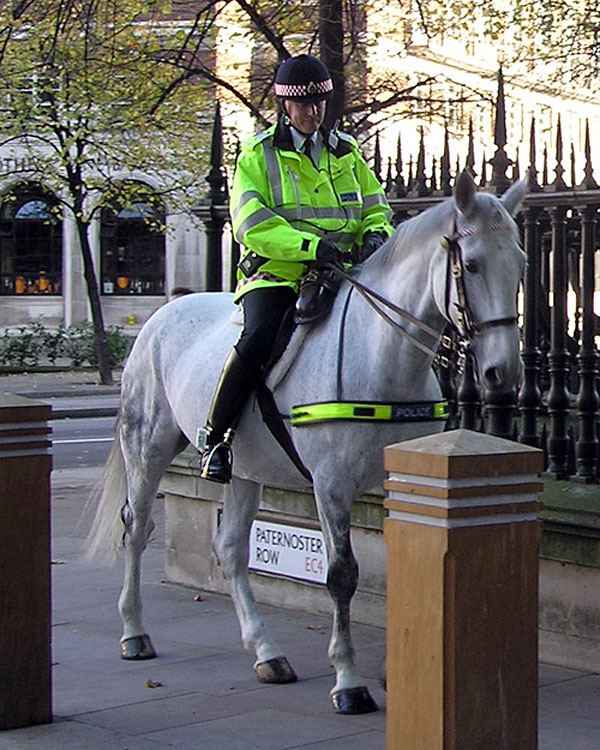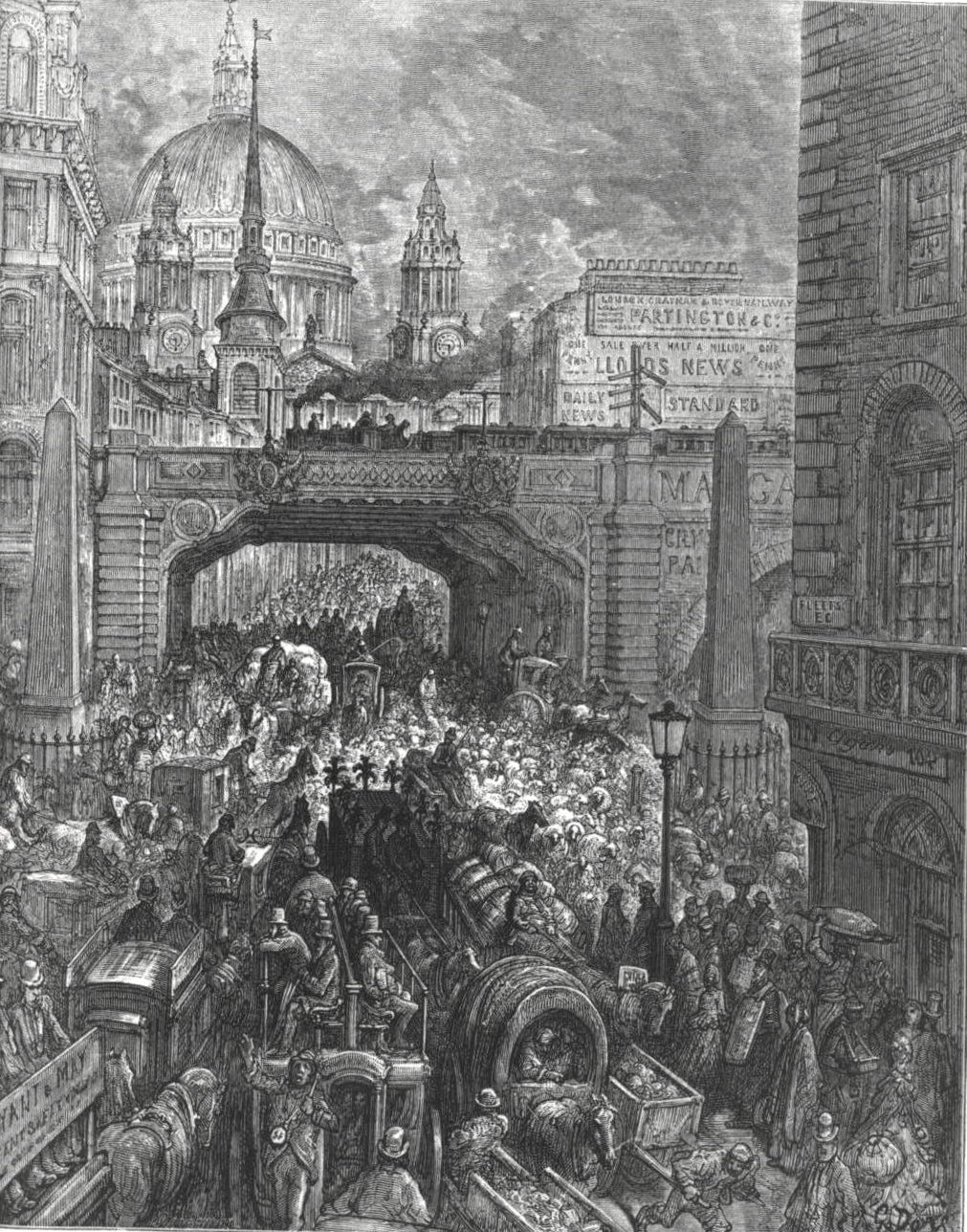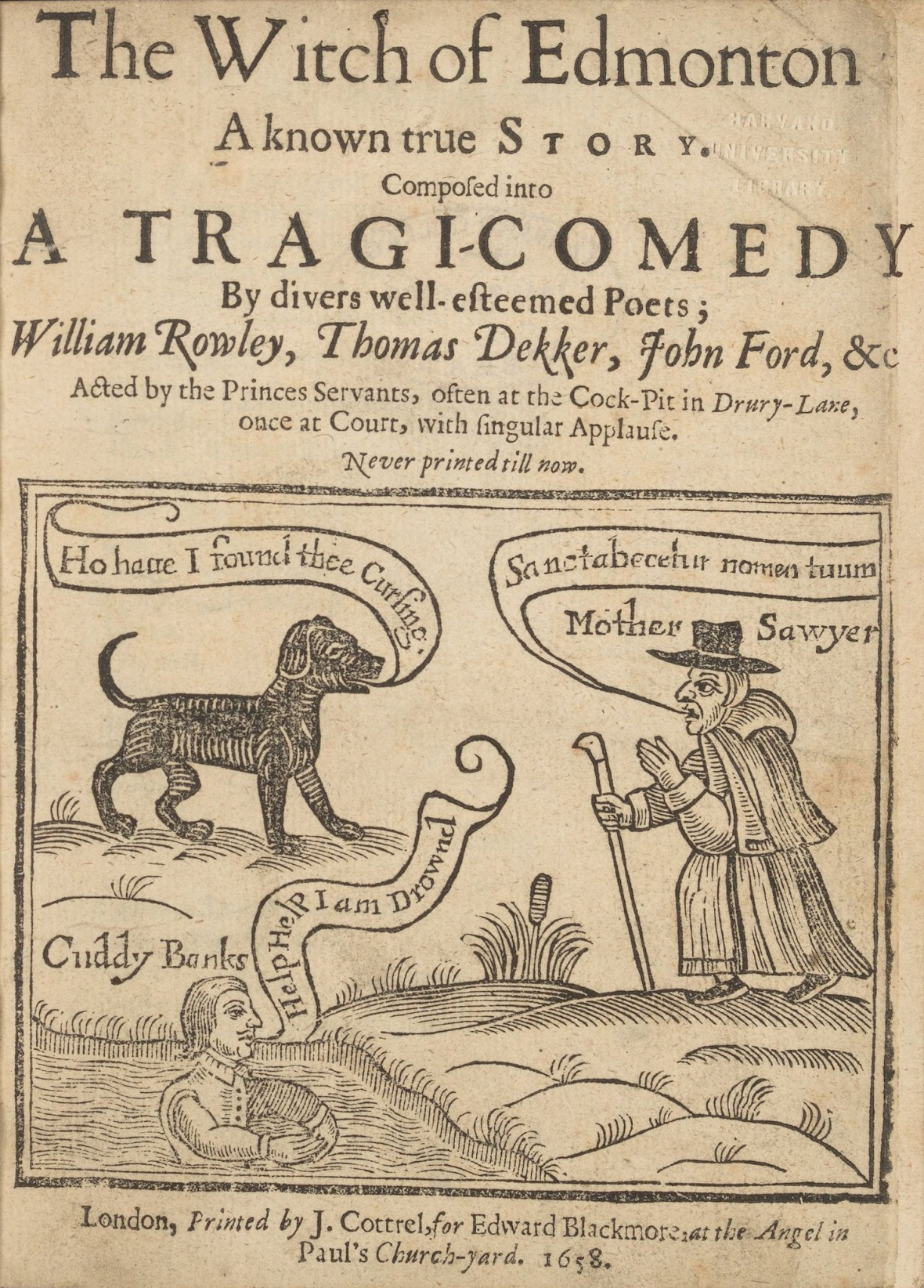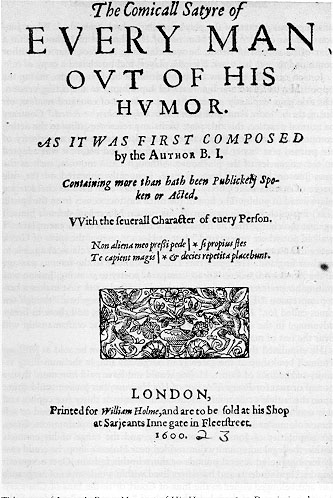|
Paul's
Paul's walk in Elizabethan and early Stuart London was the name given to the central nave of Old St Paul's Cathedral, where people walked up and down in search of the latest news. At the time, St. Paul's was the centre of the London grapevine. "News- mongers", as they were called, gathered there to pass on the latest news and gossip, at a time before the first newspapers. Those who visited the cathedral to keep up with the news were known as "Paul's-walkers". According to Francis Osborne (1593–1659): It was the fashion of those times, and did so continue till these . . . for the principal gentry, lords, courtiers, and men of all professions not merely mechanic, to meet in Paul's Church by eleven and walk in the middle aisle till twelve, and after dinner from three to six, during which times some discoursed on business, others of news. Now in regard of the universal there happened little that did not first or last arrive here...And those news-mongers, as they called them, ... [...More Info...] [...Related Items...] OR: [Wikipedia] [Google] [Baidu] |
Old St Paul's Cathedral
Old St Paul's Cathedral was the cathedral of the City of London that, until the Great Fire of London, Great Fire of 1666, stood on the site of the present St Paul's Cathedral. Built from 1087 to 1314 and dedicated to Paul of Tarsus, Saint Paul, the cathedral was perhaps the fourth church at Ludgate Hill. Work on the cathedral began after a Early fires of London#Norman, fire in 1087. Work took more than 200 years, and was delayed by another fire in 1135. The church was Consecration, consecrated in 1240, enlarged in 1256 and again in the early 14th century. At its completion in the mid-14th century, the cathedral was one of the List of longest church buildings in the world, longest churches in the world, had List of tallest churches in the world, one of the tallest spires and some of the finest stained glass. The presence of the shrine of Erkenwald, Saint Erkenwald made the cathedral a site of pilgrimage.Milman, 22. In addition to serving as the seat of the Diocese of London, the ... [...More Info...] [...Related Items...] OR: [Wikipedia] [Google] [Baidu] |
Paternoster Row
Paternoster Row was a street in the City of London that was a centre of the London publishing trade, with booksellers operating from the street. Paternoster Row was described as "almost synonymous" with the book trade. It was part of an area called St Paul's Churchyard. The street was devastated by aerial bombardment during the World War II. In 2003 the street was replaced with Paternoster Square, the modern home of the London Stock Exchange, although a City of London Corporation road sign remains in the square near where Paternoster Row once stood. As far back as the 12th century, the road was known as Paternoster Row, as it was the main place in London where Paternoster beads were made by skilled craftsmen. The beads were popular with illiterate monks and friars at the time, who prayed 30 Paternoster prayers (Latin for "Our Father") three times a day as a substitute for the 150 psalms recited a day by literate monks. Name The street is supposed to have received its name from ... [...More Info...] [...Related Items...] OR: [Wikipedia] [Google] [Baidu] |
City Of London
The City of London is a city, ceremonial county and local government district that contains the historic centre and constitutes, alongside Canary Wharf, the primary central business district (CBD) of London. It constituted most of London from its settlement by the Romans in the 1st century AD to the Middle Ages, but the modern area named London has since grown far beyond the City of London boundary. The City is now only a small part of the metropolis of Greater London, though it remains a notable part of central London. Administratively, the City of London is not one of the London boroughs, a status reserved for the other 32 districts (including Greater London's only other city, the City of Westminster). It is also a separate ceremonial county, being an enclave surrounded by Greater London, and is the smallest ceremonial county in the United Kingdom. The City of London is widely referred to simply as the City (differentiated from the phrase "the city of London" by ca ... [...More Info...] [...Related Items...] OR: [Wikipedia] [Google] [Baidu] |
John Chamberlain (letter Writer)
John Chamberlain (1553–1628) was the author of a series of letters written in England from 1597 to 1626, notable for their historical value and their literary qualities. In the view of historian Wallace Notestein, Chamberlain's letters "constitute the first considerable body of letters in English history and literature that the modern reader can easily follow". They are an essential source for scholars who study the period. Life Chamberlain's father Richard was a successful ironmonger, also Sheriff of London and twice Master of the Worshipful Company of Ironmongers, who left his son enough money to live on for the rest of his life without needing to earn a living. His mother, Anne, was the daughter of Robert Downe, an ironmonger and alderman. Though unambitious for himself, Chamberlain used his network of friends in high places to assist the career of Dudley Carleton, who rose from a minor position in the diplomatic service to become Secretary of State shortly after Chamber ... [...More Info...] [...Related Items...] OR: [Wikipedia] [Google] [Baidu] |
Ludgate Hill
Ludgate Hill is a street and surrounding area, on a small hill in the City of London. The street passes through the former site of Ludgate, a city gate that was demolished – along with a gaol attached to it – in 1760. The area includes St Paul's Cathedral. The modern cathedral, it has been claimed, was built on a site that – during the Roman British era of the early first millennium – was occupied by a major Roman temple, dedicated to the goddess Diana. Ludgate Hill itself is traditionally regarded as one of a trio of hills in Central London, the others being Tower Hill and Cornhill. The highest point is just north of St Paul's, at above sea level. The modern street named Ludgate Hill, which was previously a much narrower thoroughfare named Ludgate Street, runs between St Paul's Churchyard and Ludgate Circus (built in 1864), at which point it becomes Fleet Street. Description Many small alleys on Ludgate Hill were swept away in the mid 1860s to build Ludgate ... [...More Info...] [...Related Items...] OR: [Wikipedia] [Google] [Baidu] |
English Reformation
The English Reformation took place in 16th-century England when the Church of England broke away from the authority of the pope and the Catholic Church. These events were part of the wider European Protestant Reformation, a religious and political movement that affected the practice of Christianity in Western Europe, Western and Central Europe. Ideologically, the groundwork for the Reformation was laid by Renaissance humanism, Renaissance humanists who believed that the Bible, Scriptures were the only source of Christian faith and criticized religious practices which they considered superstitious. By 1520, Martin Luther, Martin Luther's new ideas were known and debated in England, but Protestants were a religious minority and heretics under the law. The English Reformation began as more of a political affair than a theological dispute. In 1527, Henry VIII requested an annulment of his marriage, but Pope Clement VII refused. In response, the English Reformation Parliament, Refo ... [...More Info...] [...Related Items...] OR: [Wikipedia] [Google] [Baidu] |
Thomas Dekker (poet)
Thomas Dekker (c. 1572 – 25 August 1632) was an English Elizabethan dramatist and pamphleteer, a versatile and prolific writer, whose career spanned several decades and brought him into contact with many of the period's most famous dramatists. Early life Little is known of Dekker's early life or origins. From references in his pamphlets, Dekker is believed to have been born in London around 1572, but nothing is known for certain about his youth. His last name suggests Dutch ancestry, and his work, some of which is translated from Latin, suggests that he attended grammar school. Career Dekker embarked on a career as a theatre writer in the middle 1590s. His handwriting is found in the manuscript of '' Sir Thomas More'', though the date of his involvement is undetermined. More certain is his work as a playwright for the Admiral's Men of Philip Henslowe, in whose account book he is first mentioned in early 1598. While there are plays connected with his name performed as early ... [...More Info...] [...Related Items...] OR: [Wikipedia] [Google] [Baidu] |
Elizabethan Age
The Elizabethan era is the epoch in the Tudor period of the history of England during the reign of Queen Elizabeth I (1558–1603). Historians often depict it as the golden age in English history. The symbol of Britannia (a female personification of Great Britain) was first used in 1572, and often thereafter, to mark the Elizabethan age as a renaissance that inspired national pride through classical ideals, international expansion, and naval triumph over Spain. This "golden age" represented the apogee of the English Renaissance and saw the flowering of poetry, music and literature. The era is most famous for its theatre, as William Shakespeare and many others composed plays that broke free of England's past style of theatre. It was an age of exploration and expansion abroad, while back at home, the Protestant Reformation became more acceptable to the people, most certainly after the Spanish Armada was repelled. It was also the end of the period when England was a separate r ... [...More Info...] [...Related Items...] OR: [Wikipedia] [Google] [Baidu] |
Elizabeth I Of England
Elizabeth I (7 September 153324 March 1603) was List of English monarchs, Queen of England and List of Irish monarchs, Ireland from 17 November 1558 until her death in 1603. Elizabeth was the last of the five House of Tudor monarchs and is sometimes referred to as the "Virgin Queen". Elizabeth was the daughter of Henry VIII and Anne Boleyn, his second wife, who was executed when Elizabeth was two years old. Anne's marriage to Henry was annulled, and Elizabeth was for a time declared Royal bastard, illegitimate. Her half-brother Edward VI ruled until his death in 1553, bequeathing the crown to Lady Jane Grey and ignoring the claims of his two half-sisters, the Catholic Church, Catholic Mary I of England, Mary and the younger Elizabeth, in spite of Third Succession Act, statute law to the contrary. Edward's will was set aside and Mary became queen, deposing Lady Jane Grey. During Mary's reign, Elizabeth was imprisoned for nearly a year on suspicion of supporting Protestant reb ... [...More Info...] [...Related Items...] OR: [Wikipedia] [Google] [Baidu] |
Every Man Out Of His Humour
''Every Man out of His Humour'' is a satirical comedy written by English playwright Ben Jonson, acted in 1599 by the Lord Chamberlain's Men. The play The play is a conceptual sequel to his 1598 comedy ''Every Man in His Humour''. It was much less successful on stage than its predecessor, though it was published in quarto three times in 1600 alone; it was also performed at Court on 8 January 1605. The play was entered into the Register of the Stationers' Company on 8 April 1600 by the bookseller William Holme, who published the first quarto of the play soon after. Holmes issued a second quarto later that year, with the printing done by Peter Short. Yet a third quarto appeared in 1600, published by Nicholas Ling, the stationer who would issue the "bad quarto" of ''Hamlet'' three years later. W. W. Greg characterized Ling's Q3 as "A careless and ignorant reprint" of Q1. ''Every Man Out'' contains an allusion to John Marston's ''Histriomastix'' in Act III, scene i, a play that wa ... [...More Info...] [...Related Items...] OR: [Wikipedia] [Google] [Baidu] |
Ben Jonson
Benjamin "Ben" Jonson (c. 11 June 1572 – c. 16 August 1637) was an English playwright and poet. Jonson's artistry exerted a lasting influence upon English poetry and stage comedy. He popularised the comedy of humours; he is best known for the satirical plays ''Every Man in His Humour'' (1598), '' Volpone, or The Fox'' (c. 1606), '' The Alchemist'' (1610) and '' Bartholomew Fair'' (1614) and for his lyric and epigrammatic poetry. "He is generally regarded as the second most important English dramatist, after William Shakespeare, during the reign of James I." Jonson was a classically educated, well-read and cultured man of the English Renaissance with an appetite for controversy (personal and political, artistic and intellectual) whose cultural influence was of unparalleled breadth upon the playwrights and the poets of the Jacobean era (1603–1625) and of the Caroline era (1625–1642)."Ben Jonson", ''Grolier Encyclopedia of Knowledge'', volume 10, p. 388. His ancestor ... [...More Info...] [...Related Items...] OR: [Wikipedia] [Google] [Baidu] |
Ralph Winwood
Sir Ralph Winwood (c. 1563 – 27 October 1617) was an English diplomat and statesman to the Jacobean court. Early life Ralph Winwood was born the son of Richard Winwood at Aynhoe in Northamptonshire, and was educated at St John's College, Oxford (1577), Magdalen College, Oxford (1582), and Padua (1594), studying law at Gray's Inn from 1617. In 1599, he became secretary to Sir Henry Neville (c. 1562-1615), the English ambassador in France, and he succeeded Neville in this position two years later, retaining it until 1603. He was Clerk of Privy Council (extraordinary) from 1603 to 1608, and (ordinary) from 1608 to 1609. In 1603 Winwood was sent to The Hague as agent to the States-General of the United Provinces, and was appointed a member of the Dutch council of state on the basis of the Treaty of Nonsuch. Winwood's hearty dislike of Spain coloured all his actions in Holland; he was anxious to see a continuance of the war between Spain and the United Netherlands, and exp ... [...More Info...] [...Related Items...] OR: [Wikipedia] [Google] [Baidu] |












